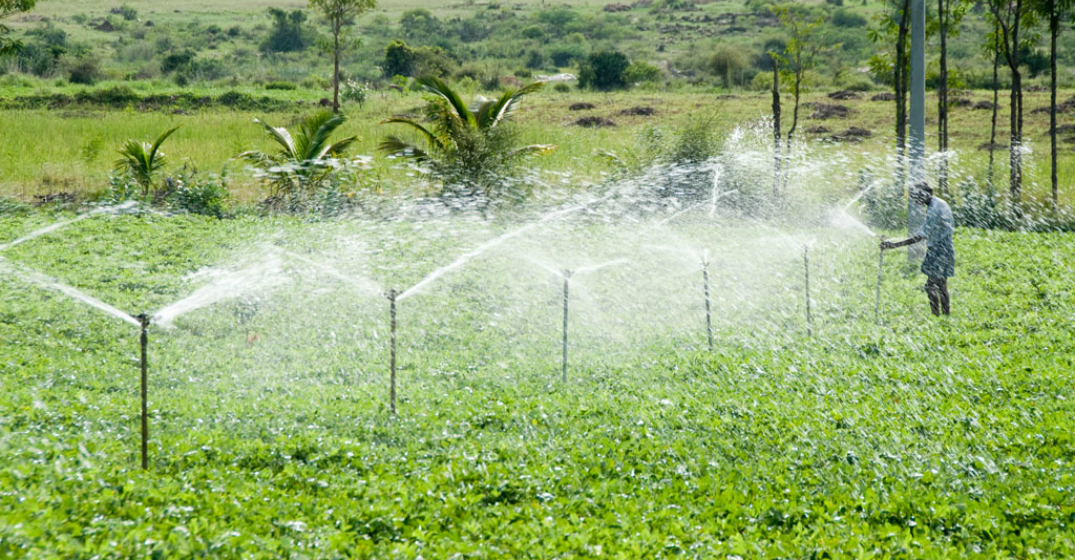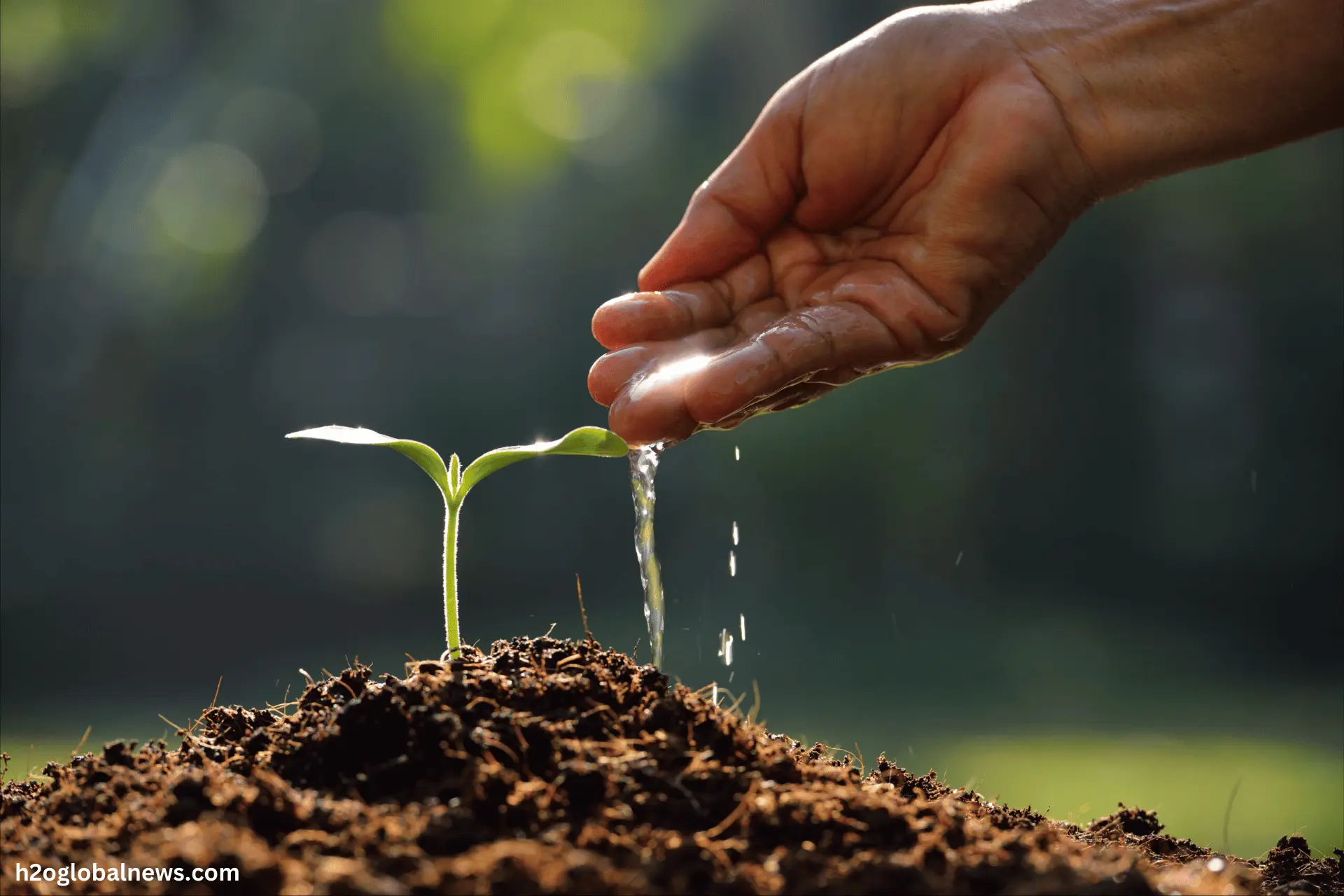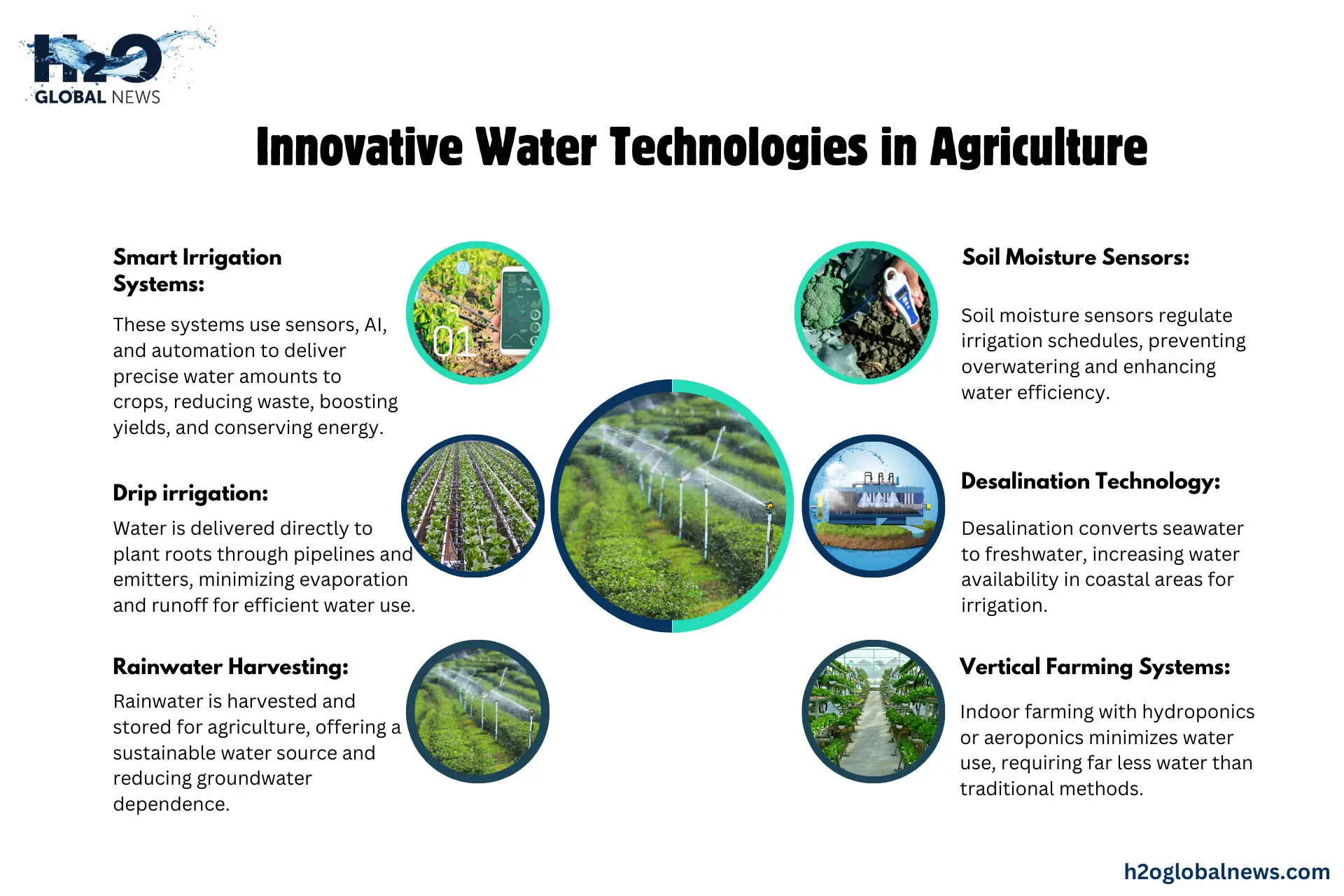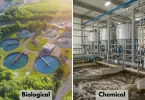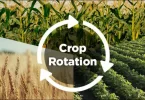Water is an essential resource for agriculture, nourishing crops, and maintaining cattle. However, with increasing concerns about water scarcity, efficient water usage in agriculture has become crucial. Advances in water-saving technologies and agricultural innovations are altering the sector, ensuring long-term farming methods that save resources while increasing production. The future of agriculture depends on how well technology and human judgment can be combined to solve critical problems like water scarcity.
The Importance of Water Conservation in Agriculture
Water is crucial in agriculture, accounting for almost 70% of total freshwater withdrawals. It plays an important role in crop irrigation, livestock hydration, and ecosystem health. However, poor water use and climate change-induced scarcity are major concerns to agricultural sustainability. Farmers must implement innovative water conservation techniques to produce more food with less water.
Drought-resistant crop varieties have been developed to thrive with little water. Scientists are also breeding new varieties that provide higher yields with the same amount of water.
Challenges in Agriculture Water Management
Overuse of Water Resources: Traditional irrigation methods frequently result in water waste, with significant amounts lost to evaporation, runoff, or seepage.
Climate Change: Unpredictable weather patterns, droughts, and floods reduce water supply, making water management more difficult.
Soil Degradation: Excessive water consumption can cause soil erosion, salinity, and nutrient depletion, lowering agricultural production.
Population Growth: The increasing demand for food puts a strain on water resources, necessitating novel ways to maintain water conservation in agriculture.
Ways to Reduce Water Usage in Agriculture
Implement Efficient Irrigation Methods: Use drip or sprinkler systems to reduce water loss.
Implement crop rotation: Grow water-efficient crops or enhance soil quality to preserve moisture.
Mulching: Cover soil with organic material to prevent evaporation and retain moisture.
Leverage agricultural technologies: Use smart irrigation, moisture sensors, and data-driven tools to manage water more precisely.
Encourage water recycling: Reuse treated wastewater for irrigation.
How Wireless Irrigation Systems Can Help Farmers Save Water
Farmers can leverage wireless water irrigation systems to optimize irrigation and save precious water resources. Wireless sensors placed in the soil can detect moisture levels and transmit the data to irrigation systems. This allows farmers to water only when and where needed based on real-time conditions. Soil moisture sensors measure the amount of water present in the soil. The sensors then relay the information to a central control system, which can automatically adjust irrigation levels.
- Soil moisture sensors help reduce overwatering by up to 30% compared to timed irrigation systems. Excess watering wastes resources and can damage crops.
- Wireless technology allows remote monitoring and control of irrigation systems. Farmers can track soil conditions from mobile devices and make adjustments even when they are away from the farm.
Challenges with implementing wireless technologies
- Initial costs to purchase equipment and training required to use new systems
- Reliance on technology which can fail or face connectivity issues
- Additional time is required to analyze sensor data and make appropriate changes.
With judicious use, wireless technologies enable efficient irrigation by applying water in precise amounts and at optimal times. Although an upfront investment is needed, water and cost savings over the long run make these systems worthwhile for farmers and the environment. By reducing excess irrigation, farmers can conserve resources and still produce healthy crop yields.
Challenges With Adopting New Agricultural Technologies
While new technologies offer promising solutions for agricultural water conservation, farmers face several challenges in adopting them.
Cost and access
Many agricultural technologies require investment in equipment, software, and training that can be prohibitively expensive for some farmers. Additionally, farmers in remote or impoverished areas may lack access to technologies like wireless sensors or precision irrigation equipment. Government grants, subsidies, and public-private partnerships could help make new technologies more affordable and accessible to farmers.
Data management
Wireless sensors and monitoring equipment generate huge amounts of data that must be stored, managed, and analyzed to provide actionable insights. Farmers and agricultural organizations will need data management systems and data analysis expertise to handle the volume of data and turn it into water-saving recommendations. Partnerships with tech companies could help build data analysis capabilities.
Adoption reluctance
Some farmers may be reluctant to adopt new technologies, especially if they are unfamiliar or complex to use. Promoting the benefits of technologies through education and demonstration projects can help address adoption reluctance. When farmers see real-world examples of how technology helps save costs, reduces risks, and improves crop yields, they will be more inclined to try the technologies themselves.
Policy and regulation
Policymakers and regulators may lag in guiding new agricultural technologies. Unclear regulations could discourage investment and adoption of new technologies. Collaboration between agricultural organizations, tech companies, farmers, and policymakers will be needed to ensure that new technologies comply with regulations while still allowing for innovation.
Innovative Water Technologies in Agriculture
Smart Irrigation Systems
How It Works: These systems employ sensors, artificial intelligence, and automation to provide precise amounts of water to crops based on their requirements.
Benefits: Reduces water waste, boosts crop yields, and conserves energy.
Drip irrigation
How It Works: Water is given directly to the plant’s roots via a system of pipelines and emitters.
Benefits: Reduces evaporation and runoff, ensuring more effective water usage.
Rainwater Harvesting
How It Works: Rainwater is collected and stored for agricultural use.
Benefits: Provides a sustainable water source while reducing reliance on groundwater.
Soil Moisture Sensors
How It Works: Sensors measure soil moisture levels and manage irrigation schedules.
Benefits: Prevents overwatering and improves water efficiency.
Desalination Technology
How It Works: It converts seawater to freshwater for irrigation.
Benefits: Expands water availability in coastal areas.
Vertical Farming Systems
How It Works: Indoor farming techniques that use hydroponics or aeroponics to grow crops with minimal water.
Benefits: Requires significantly less water compared to traditional farming.
Steps Farmers Can Take to Implement Water-Saving Technologies
To implement water-saving technologies in their operations, farmers can take several steps to get started.
Research available options
There are various wireless technologies farmers can utilize to monitor soil moisture, control irrigation systems, and track water usage. Farmers should research options like soil moisture sensors, weather stations, and smart irrigation controllers to determine what will work best for their needs and budget. Learning about the benefits and drawbacks of different technologies will help farmers make an informed choice.
Develop a budget
While many technologies promise to reduce costs through water savings, the initial investment in equipment can be expensive. Farmers need to determine how much they can allocate to new technologies and calculate potential long-term cost savings and return on investment. Some utilities or government programs may offer rebates or grants for water efficiency projects.
Choose a system and install equipment.
Once farmers set a budget and evaluate options, they can choose the technology solutions they want to implement. They will need to purchase necessary equipment like soil moisture sensors, weather stations, and irrigation controllers and have them installed properly on the farm. Companies design many technologies to integrate and provide a comprehensive water monitoring and control system.
Train employees
All employees involved in irrigation and water management must undergo training on how to operate, monitor, and maintain the new equipment to effectively use the technologies. Farmers and workers need to understand how to read data from sensors and controllers and make appropriate changes based on the information provided. With regular use, new systems and technology can become second nature, but initial training is key.
Monitor and make adjustments.
After installing new water-saving technology and training employees, farmers should closely monitor their systems to ensure maximum efficiency. Reviewing data from sensors and controllers regularly and making necessary adjustments based on weather conditions and crop needs will allow farmers to optimize water usage. Continually monitoring technology and performance can also help identify any issues early on.
Conclusion
As you have seen, technology offers promising solutions to help farmers conserve our most precious resource. Wireless sensors can precisely determine the required amount of water and enable microirrigation. Drones provide an eye in the sky to monitor crops and determine water needs. By supporting innovation, providing education, and improving infrastructure, technology can transform agriculture and ensure sustainable water use for future generations.
FAQs
1- How does water conservation technology help in agriculture?
Water conservation technology reduces wastage, ensures optimal water usage, and helps farmers adapt to changing climate conditions.
2- Why is water management important in farming?
Proper water management prevents resource depletion, enhances crop productivity, and reduces environmental impacts like soil erosion and salinity.
3- What are drought-resistant crops?
Drought-resistant crops are genetically modified or selectively bred to thrive in low-water conditions, ensuring food security in arid regions.
4- What is the significance of agricultural technologies in water conservation?
Agricultural technologies improve water efficiency, reduce wastage, and enhance the sustainability of farming practices.



